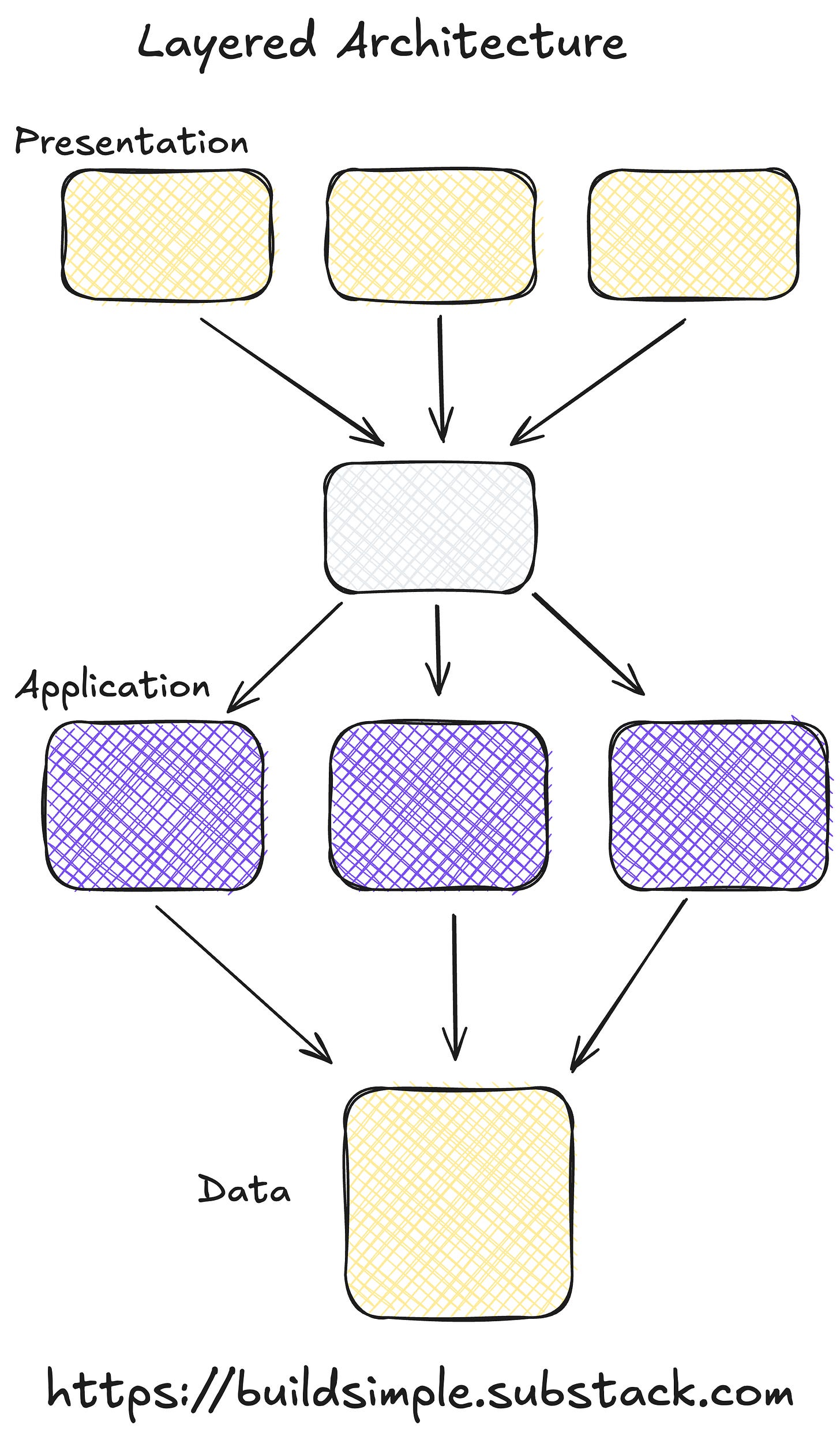Layered Architecture: Systems in Tiers
For a time I was on an ARB (architecture review board), and was tasked to review and help teams in their cloud migration journey. One of this teams spent some months moving a monolithic application to the cloud, only to discover they'd essentially recreated their on-premise three-tier architecture in the cloud. Initially everyone was disappointed that the new project wasn’t using the latest architecture patterns, but the truth is that, for the problem that system was solving, the layered architecture was the best solution.
Beyond the Monolith
While our previous exploration of monolithic architecture showed the power of unity, layered architecture demonstrates the power of purposeful separation. But we're not talking about code organization here - we're talking about system-level tiers that can be deployed, scaled, and managed independently.
System-Level Layers
Modern layered architectures typically manifest in three key system tiers:
Presentation Tier
Handles all user interface and client interactions
Can be scaled independently based on user load
Often distributed globally via CDNs
Typically stateless for easy horizontal scaling
Application Tier
Contains core business processing capabilities
Scales based on computational needs
Can be replicated across regions
Manages session state if required
Data Tier
Manages data persistence and retrieval
Scales based on storage and query patterns
Often involves multiple specialized stores
Handles data replication and consistency
Through the Lens of System Dimensions
Examining layered architecture through our three dimensions of system design reveals how tiers interact with each other:
Coordination The relationship between tiers follows a strict hierarchy. Upper tiers orchestrate operations by making requests to lower tiers, but lower tiers never initiate actions upward. The presentation tier orchestrates the application tier, which in turn orchestrates the data tier, creating a clear chain of command and responsibility.
Communication Communication flows strictly downward, with responses flowing back up through the same path. Each tier only communicates with the tiers immediately adjacent to it, following the principle of layer isolation. This creates clear communication boundaries - the presentation tier must go through the application tier to access data, preventing direct database access from the UI.
Consistency As operations flow down through the tiers, each tier adds its own consistency guarantees. The presentation tier makes requests, the application tier ensures business rule consistency, and the data tier provides transactional consistency. This creates a cascade of increasingly strong consistency guarantees as you move down the stack.
The NFR Impact
How does layered architecture at the system level affect our non-functional requirements?
Performance ⭐⭐⭐
Scalability ⭐⭐⭐⭐
Maintainability ⭐⭐⭐⭐
Reliability ⭐⭐⭐⭐
Testability ⭐⭐⭐⭐⭐
Each tier can be optimized for its specific requirements, leading to better overall system characteristics.
Deployment Patterns
Modern layered architectures employ sophisticated deployment strategies:
Global Distribution
Presentation tier deployed close to users via CDNs
Application tier replicated across regions
Data tier distributed with careful consistency management
Independent Scaling
Each tier scales according to its specific metrics
Presentation scales with user load
Application scales with processing demands
Data scales with storage and query needs
Isolation and Recovery
Issues in one tier don't necessarily affect others
Each tier can have its own recovery strategy
Maintenance can be performed tier by tier
Real World Success Stories
Consider how major e-commerce platforms implement layered architectures:
Amazon's Retail Platform
Presentation layer distributed globally via CloudFront
Application logic runs in regional data centers
Data tier combines various specialized stores
Banking Systems
Presentation tier handles multiple channels (web, mobile, ATM)
Core banking runs in highly secured application tiers
Data tier ensures transactional integrity
Architect's Alert 🚨
Here's the critical insight about layered architectures: The boundaries between tiers aren't just technical - they're organizational and operational. Each tier often has its own team, deployment cycle, and scaling strategy.
Modern Implementation Strategies
Today's layered architectures leverage modern infrastructure:
Cloud Platforms
Presentation tier in CDN and edge services
Application tier in container orchestration platforms
Data tier in managed database services
Hybrid Deployments
Presentation in cloud for global reach
Core processing on-premise for control
Data distributed across environments
Container Strategy
Each tier containerized independently
Different container optimization per tier
Separate orchestration policies
Looking Forward
As we continue exploring architectural styles, we'll see how the MicroKernel pattern builds on these layering concepts while introducing plugin-based extensibility. But the fundamental insights of layered architecture - separation of concerns at the system level - remain relevant across all patterns.
The key question isn't whether to layer your system - it's how to layer it effectively for your specific needs. What's your experience with layered architectures in production? Have you seen them succeed or fail? What made the difference?




